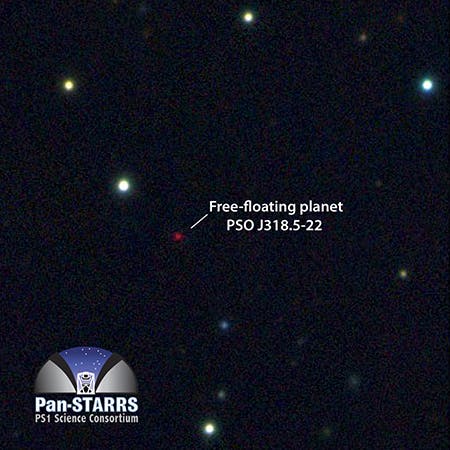An international discovered a young, exotic, rogue planet – PSO J318.5-22, is just 80 light-years away from Earth and has a mass six times that of Jupiter; it was formed apporximately 12 million years ago – which makes it a newborn in terms of planets (the Earth was formed approximately 4.5 billion years ago.

“We have never before seen an object free-floating in space that that looks like this. It has all the characteristics of young planets found around other stars, but it is drifting out there all alone,” explained team leader Dr. Michael Liu of the Institute for Astronomy at the University of Hawaii at Manoa. “I had often wondered if such solitary objects exist, and now we know they do.”
During the past decade, the discovery of new exoplanet has developed at an exponential pace, without about 1.000 (!) new planet discovered through indirect methods. However, even with the astonishing development of technique, only a handful were observed through direct imaging.
“Planets found by direct imaging are incredibly hard to study, since they are right next to their much brighter host stars. PSO J318.5-22 is not orbiting a star so it will be much easier for us to study. It is going to provide a wonderful view into the inner workings of gas-giant planets like Jupiter shortly after their birth,” said Dr. Niall Deacon of the Max Planck Institute for Astronomy in Germany and a co-author of the study.
Astronomers have confirmed the existence of rogue planets only a few year ago, so this is also an exciting, new field of study. There is no current way of telling whether these are planets that have been ejected from orbiting a star or were originally formed on their own as sub-brown dwarfs.
Via University of Hawaii.


